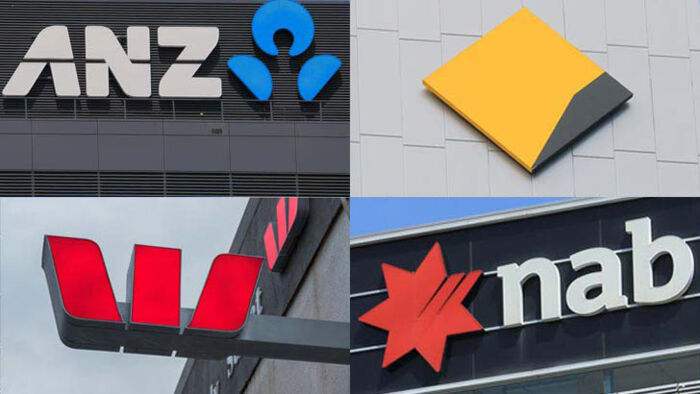What rising interest rates mean for bank shareholders
By Arian Neiron
Australia is in the middle of rising interest rates and property prices have started to fall.
For investors keen to protect their capital, now is not a prudent time to be overly concentrated or overweight in backing Australia's big banks, whose earnings could be threatened by slowing mortgage growth and the possibility of recession as credit costs rise.
The Reserve Bank of Australia (RBA) has raised interest rates several times this year and is likely to keep on raising rates to curb inflation. That threat of more rate rises is weighing on the prices of bank shares.
Investors are worried about the economic impact of aggressive rate rises on the property and mortgage market.
A fall in the property market would adversely impact the big four lenders. By the RBA's own reckoning, a 1% rise in rates, if permanent, could reduce the value of existing homes by 30%. Any drop in property prices could slow down the rate of home loan growth which would not bode well for the big banks, as writing mortgages has been the engine room of their profits for a long time.
Most Australian equity portfolios have significant exposure to the big four banks which represent nearly 20% of the S&P/ASX 200 Accumulation Index. In other words, if you hold a blue-chip portfolio or are invested in an Australian equity fund that tracks or benchmarks to the S&P/ASX 200, one out of every five of your dollars is likely to be invested in the banks.
That could pose a capital risk to your portfolio. Pressures on banks' earnings - and therefore bank share prices - is likely to come from several sources later this year and in 2023. In particular, an increase in funding costs and rise in non-performing loans could see profits under pressure.
The net interest margins (NIM) of the big banks could narrow further, after falling below 2% for the first time ever this year, as the chart from the RBA shows below. This will put pressure on the big banks' ability to generate cash flow and increase dividend payments.

With the Commonwealth Bank the first to report earnings in August, Australian bank earnings are likely to be in line with expectations but forward earnings estimates and even dividend payouts could be revised down in the face of the current choppy economic environment.
Fears are growing that the Australian economy won't be able to absorb the impact of higher borrowing costs and falling property prices in the face of rapidly rising interest rates.
Indeed, the quicker the RBA raises interest rates, the greater the risk is to the earnings of the big banks. Higher interest rates raise funding costs for the big banks and also raise the risks of recession as they put a firm brake on economic activity.
Higher credit costs have already been reflected in the prices of the big banks and prices remain vulnerable. Over the past 30 years, Australian bank price-to-earnings (P/E) ratios have fallen in each of the four RBA tightening cycles. There is now a clear risk that the P/E de-rating won't be offset by earnings upgrades - Morgan Stanley Research has showed that in the 1999-2000 and 2009-2010 tightening cycles the major bank P/E fell by an average of 2.0 times in the first three months after the first rate hikes and by 4.2 times by the time of the last hike.
ANZ's $5 billion plan to buy Suncorp won't materially alter the outlook for that bank. ANZ is lagging as the smallest of the big four banks in Australia, so the deal will allow the bank to better compete with Commonwealth Bank. But ANZ still faces higher interest rates and slowing mortgages growth, as do the other big banks.
And while Australian banks operate in an oligopoly and still have a 'wide moat' designation from Morningstar, the timing and size of the RBA rate hikes raises big uncertainty over their ability to maintain current levels of profitability. Investors should therefore take a neutral weight on their exposure to Australian banks as interest rates climb higher.
With inflation rising fast here and abroad and the employment market tightening markedly in June, that adds to inflationary pressures. So the RBA is likely to raise interest rates by 50 basis points at its August meeting, with several increases potentially following after that depending on how the economy reacts to the mega rate rises of June and July.
So, with the RBA committed to raising rates, investors are wise to be cognisant of which sectors they may be overweight and their exposure to the banks. Equally weighting an Australian equity portfolio gives investors broad exposure to the economy and, importantly, balances across cyclicals and defensives in a time where the expectations are that we are in for heightened risk.
Get stories like this in our newsletters.



